Aquaculture one-stop solution provider & liquid storage equipment manufacturer.
Looking at the New Industry Opportunities Behind Types of Aquaculture Systems
Here is the story about types of aquaculture systems. Its designers, coming from Shandong Wolize Biotechnology Co., Ltd., developed it after their systematic market survey and analysis. At that time when the product was a newcomer, they certainly were challenged: the production process, based on the immature market, was not 100% capable of producing 100% quality product; the quality inspection, which was a little different from others', was adjusted several times to get adapted to this new product; the clients had no willingness to try it and give feedback...Fortunately, all these were overcome thanks to their great efforts! It was finally launched onto the market and is now well received, thanks to its quality assured from the source, its production up to the standard, and its application widely expanded.
WOLIZE's popularity has been increasing rapidly. Equipped with innovative technology and advanced facilities, we make the product be of fantastic durability and enjoys a very long service period. Many customers send e-mails or messages to express their thanks because they have gained much more benefits than before. Our customer base is gradually becoming greater and some customers travel across the world to pay a visit and cooperate with us.
We, at WOLIZE, provide types of aquaculture systems performance and custom services to our customers and help them achieve the best. We maintain the quality and confirm its compliance with the changing customers' expectations with respect to various aspects such as price, quality, design and packaging.
Loach is known as "water ginseng". It has high nutritional value and delicious taste, so it is very popular in the market. Loach is a relatively common food, and cultured loaches can often be purchased on the market. Of course, there are many methods of breeding loaches, and there are also various types of breeding ponds, such as earth ponds, rice fields, cement ponds, PE barrels, and plated ponds. Zinc plate canvas pond breeding, etc. How to breed loach? How to build a loach breeding pond?
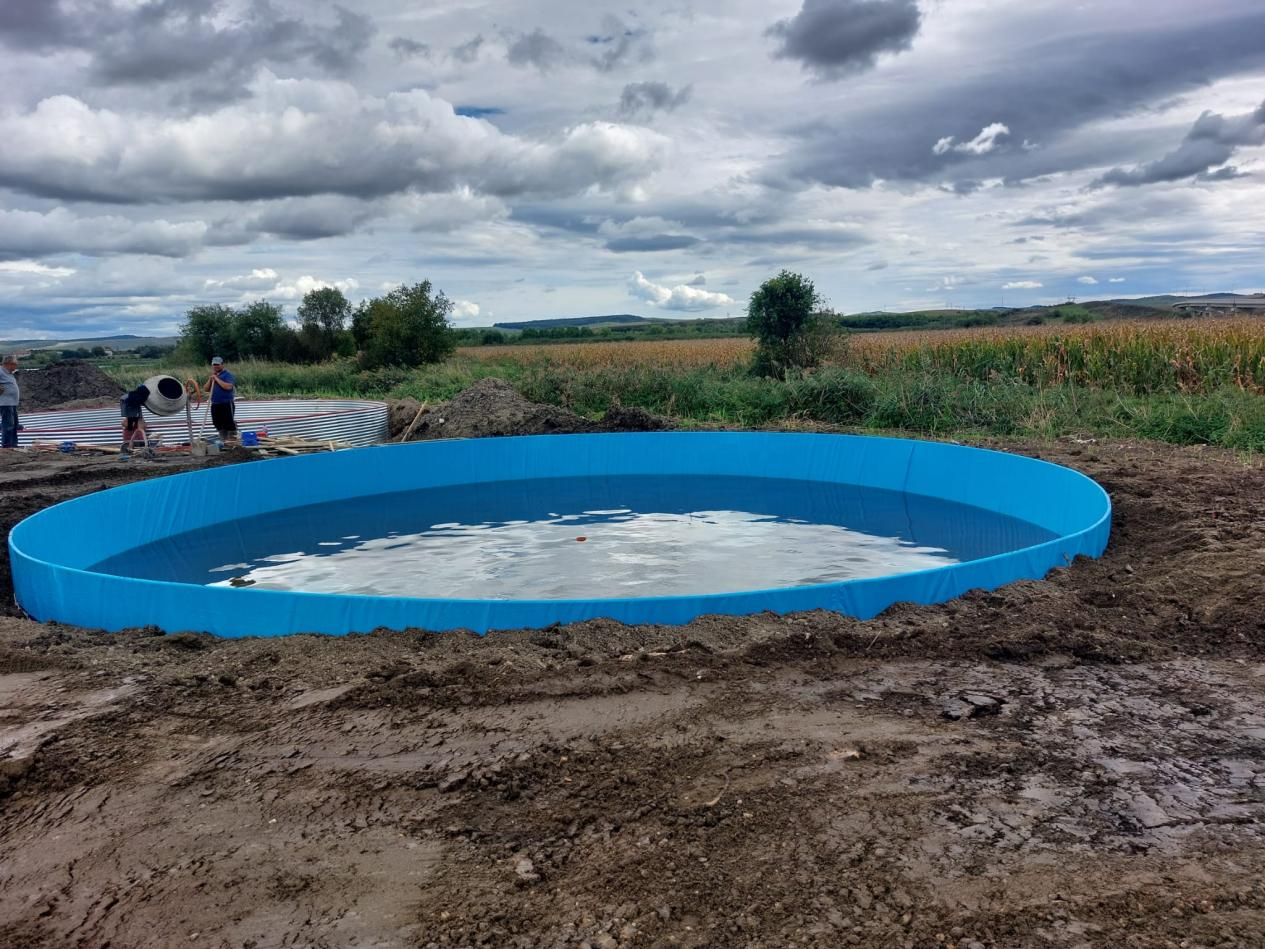
Let’s take the galvanized sheet canvas fish pond, which has been popular in high-density aquaculture equipment in the past two years, as an example. The construction of canvas fish pond is relatively simple. Compared with other ponds such as cement ponds, it is less time-consuming and labor-intensive. It can be installed once it is installed. When put into use, the terrain requirements for breeding sites are not so strict. They can be placed in low-lying mountains, flat rice fields and other places. Although the canvas pool can adapt well to any terrain, the breeding loach should try to choose shelter from the wind and sunny areas, and the terrain is relatively high. And a place with plenty of water. Of course, the water source for aquaculture is the top priority. When raising loach, water quality management must be done well, which can reduce the cost of breeding and increase production.
Galvanized sheet canvas pond farming in deep mountains
When raising loaches, you can plant some aquatic plants such as aquatic plants in the breeding pond, or you can create an aquaponic symbiosis model and plant some vegetables, which can not only clean the water body, but also provide shelter and shelter for the farmed loaches. Provide some microorganisms and small insects for loaches to feed on.
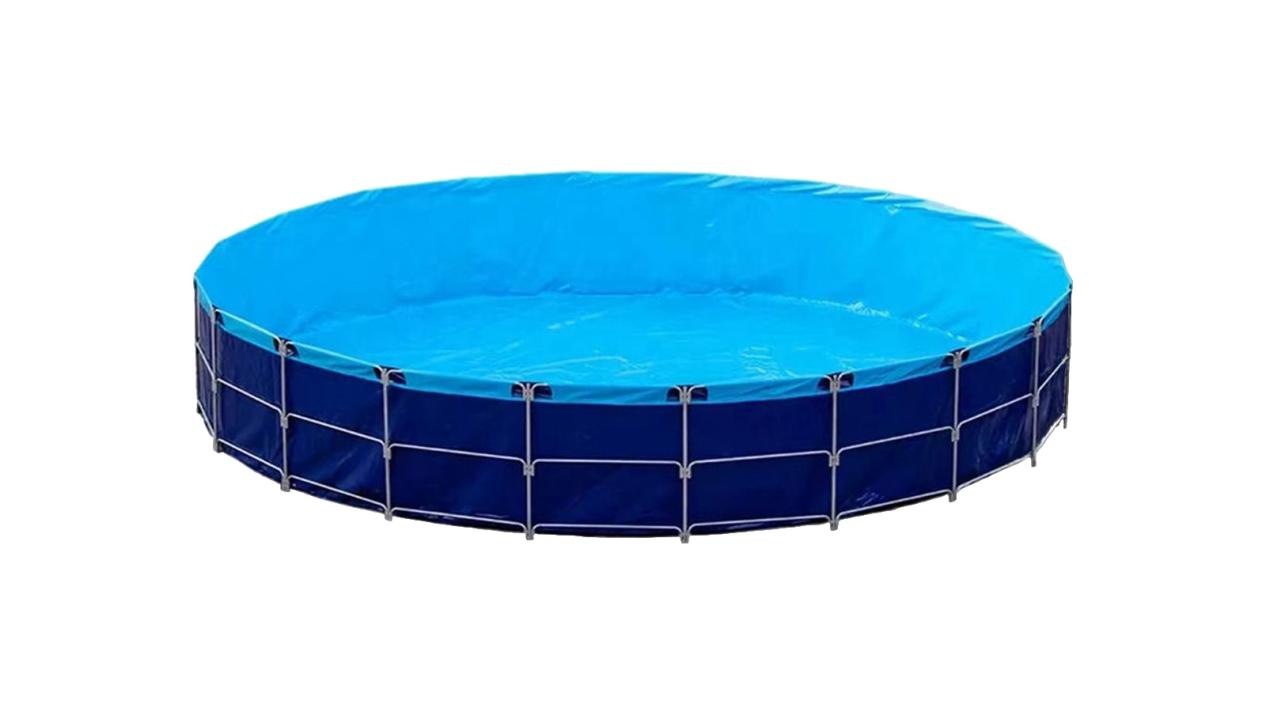
So what should be done about the effluent of wolize's canvas fish pond? The materials needed to prepare for the sewage of the canvas pond are roughly matching fish toilets, a number of sewage drainage pipes (PVC water pipes and air pipes), and the entire drainage and sewage system has water sources, inlet and outlet, various channels, sluice gates, catchment pools, and so on. In order to facilitate sewage discharge, the bottom of the fish pond is generally recommended to make the bottom of the pot shape, so that some of the waste and slag of the flowing fish pond through the water body will converge to the center of the fish pond, in this position to install the fish toilet, the fish pond excrement can be smoothly discharged through the fish toilet and pipe, to keep the water quality clean.
The sewage design of the canvas fish pond is relatively simple, because the canvas fish pond is a regular shape, there is no cleaning dead corners, there will be no silt blockage, and the installation location of the fish toilet and pipeline can be determined according to the site selection and personal needs of the fish pond, and the limitation is relatively small. In addition to fish toilet sewage, conditions can also be made into fish and vegetables symbiotic circulating water filtration system, fish and vegetables double harvest saving resources is more ecological and environmental protection.
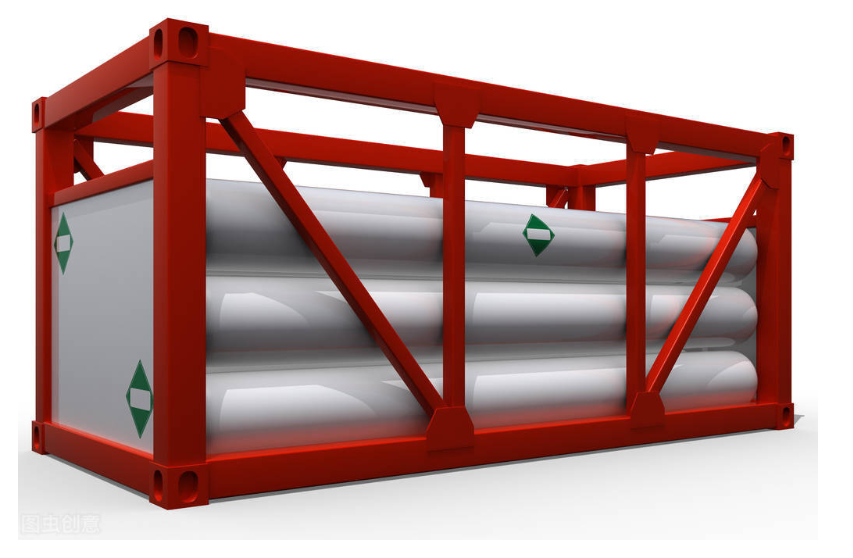
Flexitank is a new packaging method invented and developed 25 years ago. It effectively transports and stores liquid cargo through ordinary containers. Thereby greatly reducing the logistics cost of liquid cargo. From the invention of the liquid bag to the current large-scale production and use, the material, design and use method of the liquid bag have undergone many reforms and updates. Even today, the technology and scope of use of the liquid bag can only be said to be relatively mature. In the process of continuous practice and exploration, the packaging method of flexitank will definitely be recognized and accepted by the market.
In logistics, no solution is perfect. Risk and cost are always in opposition, and enterprises are always constantly exploring the balance point as they grow. Here I only discuss some of the risks and disadvantages of flexitanks based on my personal understanding. The purpose is to let more people understand flexitanks objectively. Of course, the ability is limited, and more experts are expected to correct and supplement. thank you all!
Compared with iso tank, the main risks of liquid bag are:
Leakage: Speaking responsibly, leakage is inevitable. It is also the biggest obstacle to using liquid bag at present. There are many reasons for leakage, which are generally divided into: design defects of liquid bags; production quality defects of liquid bags; improper use (including scratches by foreign objects, violent collisions, etc.).
What can be done now is to improve the design, strictly control the quality, and strengthen customer guidance to reduce the risk of leakage. Through rapid network response, reasonable insurance claims further cover possible risks.
Drum box: Due to the improper arrangement of empty flexitanks, violent shaking of the container, or the use of non-standard containers, etc., the container box is bulged or even broken. -Strengthen customer guidance and rational use of flexitanks; at the same time, strengthen communication with transportation companies and rationally operate container flexitanks to reduce the risk.
Unloading residue: some goods cannot be unloaded because the inner layer material is adsorbed on the valve port and causes blockage. Or the inner layer material is broken, and the cargo penetrates between the inner layer material and the outer layer material, making it impossible to unload. This problem mainly occurs in multi-layer flexitanks, and single-layer flexitanks can be better solved.
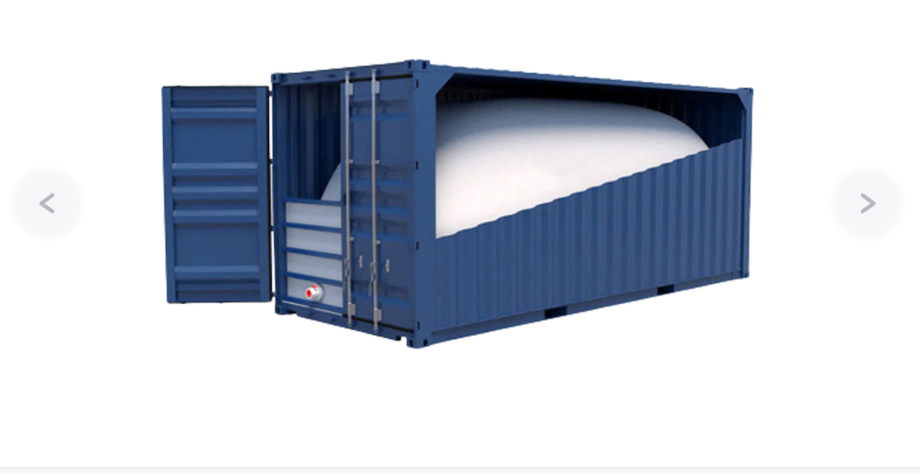
Restrictions on the use of flexitanks
Scale requirements: storage tank equipment is required at the receiving and shipping places;
Liquid temperature requirements: Some liquids need to be heated, and the liquid bag is difficult to operate.
Ambient temperature requirements: Due to the characteristics of PE materials, it is difficult to operate at temperatures below minus 15 degrees.
Separate storage requirements: the flexitank after loading must be combined with the container operation.
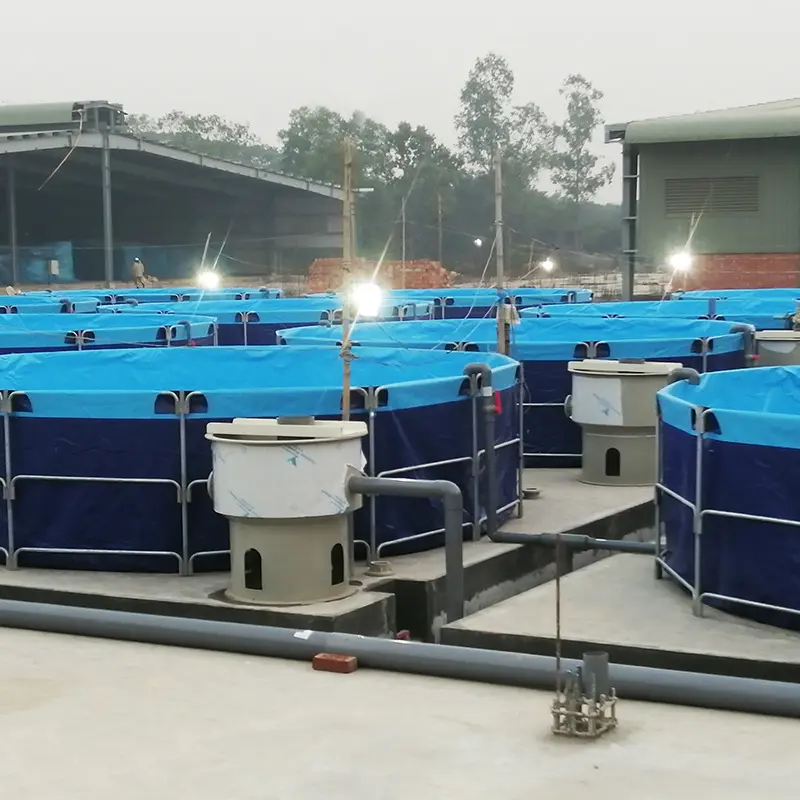
Since a lot of residual bait and excrement will be produced during the breeding process,
a large amount of them will be deposited on the bottom of the pond and fermented and
decomposed, often producing harmful gases such as hydrogen sulfide and ammonia
ammonia, resulting in deterioration of water quality, which not only seriously affects the
growth of fish species, but also causes The occurrence of diseases, especially in the summer
when the temperature is higher, the speed of water quality deterioration is very fast, so
it is necessary to add new water frequently to improve the water quality.
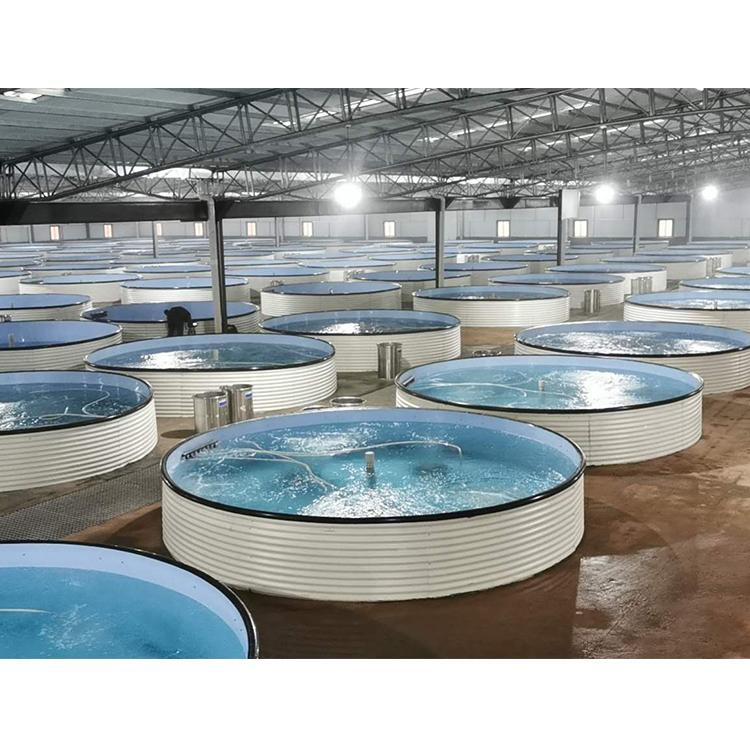
As the fish body continues to grow, the number of water changes should be flexibly
controlled according to the specific conditions of water quality changes. It is necessary
to do a good job in daily disease prevention work, and take corresponding measures in
time according to the observation results of the pond patrol. In addition to using quicklime
and other drugs to clean the pond thoroughly, attention should also be paid to cleaning
the food field regularly, and disinfection should be carried out during fish disease epidemic
seasons.
Raceway aquaculture, often referred to as flow-through systems, is a method that utilizes continuously running water to maintain a healthy and sustainable environment for fish. This setup ensures optimal aeration, water circulation, and overall fish health, making it a preferred choice in modern aquaculture. As the global demand for fresh, healthy seafood continues to rise, the need for precise and eco-friendly practices in aquaculture has become more critical than ever.
The Role of Technology in Enhancing Raceway Design
Technology has become an integral part of transforming raceway design, offering innovative solutions to common challenges. Key technologies include:
- IoT Sensors: These sensors play a crucial role in monitoring water quality in real-time. They collect data on parameters like temperature, dissolved oxygen, and pH, providing valuable insights for system management. For instance, real-time data can alert farmers to issues such as sudden changes in water temperature or oxygen levels, enabling timely interventions.
- AI and Machine Learning: Artificial Intelligence optimizes raceway performance by analyzing the data collected from IoT sensors. AI can predict maintenance needs, adjust water flow, and enhance overall system efficiency, thereby reducing downtime and resource waste. For example, predictive maintenance can prevent equipment failures, ensuring continuous operations and reducing repair costs.
- Robotic Automation: Robotic systems handle tasks like feeding, water circulation, and waste management, significantly reducing manual labor. This automation not only ensures consistent quality but also optimizes the use of resources. Automated feeding systems can adapt to fish needs, ensuring optimal nutrition and reducing waste.
- Virtual Reality (VR) and Simulation Tools: VR tools aid in designing and visualizing raceways before construction. By using VR, farmers and designers can envision optimal layouts, considering water flow, waste management, and spatial efficiency. This ensures that the final design meets all necessary criteria and reduces the risks associated with structural issues.
Challenges and Solutions in Raceway Design
Despite its advantages, raceway aquaculture faces several challenges, including water flow management, waste reduction, and efficient waste treatment. Solutions to these challenges include:
- Smart Feeding Systems: These systems automatically dispense food based on fish needs, ensuring optimal nutrition and resource efficiency. For example, smart feeding systems can adjust the amount of food based on the fishs appetite, reducing overfeeding and minimizing waste.
- Hydroponic Raceways: Combining hydroponics with raceways can significantly reduce water usage, making the system more sustainable and cost-effective. Hydroponics leverages the same water for both fish and crops, creating a symbiotic relationship that enhances efficiency.
- Biofiltration Systems: These systems use biological media to treat and filter water, improving water quality and reducing the need for external treatment facilities. Biofiltration systems can break down organic waste and remove harmful substances, ensuring clean and healthy water for the fish.
Emphasizing Sustainability and Precision
Sustainability is a critical aspect of modern aquaculture. Advanced technologies like renewable energy sources and energy-efficient lighting help reduce the environmental footprint. For instance, solar-powered lighting can provide energy for raceways, reducing reliance on non-renewable sources. Water conservation techniques, such as low-water-use systems and efficient waste management, further enhance sustainability. Ethical practices, including fair labor standards and environmental stewardship, complement technological advancements, ensuring a harmonious coexistence with the environment.
Success Stories in Tech-Driven Raceway Design
Successful examples of tech-driven raceway systems include:
- AI-Driven Monitoring Systems: A fish farming operation in Chile uses IoT sensors and AI to monitor water quality and optimize feeding schedules. This system not only reduces waste but also ensures the health of the fish. For example, the AI can predict optimal feeding times based on real-time data, ensuring consistent growth and reducing feed costs.
- Hydroponic Raceways: A hydroponic system in Asia uses less water by combining crops and raceways. This integration not only enhances efficiency but also reduces water usage, making the system more sustainable. For instance, the hydroponic raceway uses a closed-loop system where water is recycled, significantly reducing the need for external water sources.
- Renewable Energy Integration: A farm in Norway integrates solar-powered lighting and hydroponic systems, reducing reliance on external water sources and lowering operational costs. This approach not only enhances sustainability but also reduces the overall cost of operation. For example, the solar panels provide energy for the raceways, while the hydroponic systems offer a closed-loop water management system.
The Future of Raceway Aquaculture System Design
Emerging technologies like biotechnology, 3D printing, and genetic engineering promise to further revolutionize raceway design. Innovations such as 3D-printed structures for optimized flow and genetic engineering for improved fish health can enhance productivity and sustainability. For instance, 3D printing can create custom-designed structures that optimize water flow, reducing resistance and improving efficiency. Genetic engineering can lead to the development of fish breeds that are more resistant to diseases and better adapted to specific environmental conditions.
Collaboration between technology companies, researchers, and farmers is essential to harness these innovations. This collaboration can foster a scalable and efficient aquaculture industry. For example, partnerships between tech companies and research institutions can lead to the development of new technologies and their successful implementation in real-world settings.
The Intersection of Tech and Aquaculture
Technology is driving precision and sustainability in raceway aquaculture design, offering innovative solutions to existing challenges. By integrating IoT, AI, robotics, and advanced filtration systems, farmers can enhance fish health, reduce environmental impact, and improve efficiency. The future of aquaculture lies in these advancements, promising a greener, more efficient, and scalable industry. As we embrace technology, we can ensure that aquaculture remains a vital and ethical source of seafood for generations to come.
By integrating these technologies, raceway aquaculture is not only becoming more efficient but also more sustainable. The examples provided demonstrate the real-world impact of these innovations, ensuring that aquaculture practices continue to evolve positively.
Hey everyone! The aquaculture industry is gearing up for a major transformation, thanks to a new wave of innovative farming methods. Recirculating fish farming systems are setting the scene for a future where sustainability, efficiency, and robust technology come together to produce the seafood we love. Let's explore the exciting trends shaping this industry and how manufacturers are capitalizing on them.
Technological Advancements Driving Efficiency and Sustainability
The world of recirculating fish farming is no longer just about farming fish; it's about doing it smarter and greener. Manufacturers are leveraging cutting-edge technology to create more efficient and sustainable systems. One of the game-changers here is artificial intelligence (AI). AI-powered systems can monitor water quality in real-time, ensuring that everything is always within optimal parameters. This is a huge leap from the old ways and helps prevent overusing resources.
Robotics are also making a huge impact. These machines handle tasks like feeding and cleaning, making the whole process smoother and more productive. Imagine feeding fish without lifting a fingerits a reality now! Additionally, IoT devices are changing the game by allowing farmers to track system performance in real-time, troubleshoot issues instantly, and maintain optimal conditions without a lot of manual effort. It's like having a virtual assistant for your fish farm!
Market Demand for Scalable and Sustainable Solutions
Consumers today are not just looking for tasty fish; they want to know its been ethically and sustainably sourced. Recirculating fish farming systems fit this need perfectly. These systems use less water and energy, making them a responsible alternative to traditional farming methods. They reduce the environmental impact and help maintain ecosystems, which is great for everyone.
Moreover, the global population is becoming more aware of environmental issues, and they want to support food sources that are kinder to the planet. The demand for locally produced, ethically raised products is soaring. Recirculating systems are a perfect match for this trend, making them a growing market for manufacturers who are ramping up production to meet this demand for scalable and adaptable solutions.
Embracing Sustainability: The Role of Environmental Practices
Sustainability isn't just a buzzword in the recirculating fish farming industry; it's a necessity. Manufacturers are adopting innovative practices to reduce their environmental impact while maintaining high productivity. Advanced water recycling technologies are a key component. These systems use filters and biotic processes to reclaim and reuse water, significantly cutting down on freshwater inputs. It's like giving the environment a second chance!
In addition to water recycling, waste management solutions are a big focus. Organic matter is composted, and by-products are turned into nutrient-rich fertilizers. This reduces waste and improves soil quality, making it a win-win for the farm and the environment. Plus, manufacturers are going the extra mile by adhering to stringent environmental standards, which helps avoid penalties and builds trust with consumers. Many are also transitioning to renewable energy sources like solar and wind power, making their operations more sustainable and cost-effective.
Challenges and Opportunities in the Recirculating Fish Farming Market
Looking ahead, the market presents numerous opportunities. One exciting trend is the integration of hydroponics and aquaponics with recirculating systems. These systems not only enhance biodiversity but also optimize resource utilization, making them ideal for large-scale operations. Additionally, the growing demand for locally produced seafood is driving manufacturers to explore innovative layouts that maximize space and resource efficiency. It's all about being adaptive and innovative!
The Future of Recirculating Fish Farming: Trends and Innovations to Watch
The future of recirculating fish farming looks brighter than ever, thanks to emerging technologies and changing market demands. Researchers are pushing the boundaries with biotechnology, such as genetically modified organisms (GMOs), to improve water quality, feed efficiency, and disease resistance. Hybrid farming systems that combine multiple species, like hydroponics and aquaculture, are on the rise. These systems not only enhance biodiversity but also make better use of resources.
Global trade trends are also shaping the industry. With the increasing demand for locally produced, fresh seafood, manufacturers are investing in vertical farming and hydroponic systems that can be integrated into existing recirculating setups. This is especially relevant in regions with limited water resources but high demand for fresh produce. Its all about finding new ways to make farming more sustainable and efficient.
Conclusion
The recirculating fish farming industry is at the forefront of innovation, sustainability, and market adaptation. Manufacturers are playing a pivotal role in driving this growth by embracing advanced technologies, optimizing resource use, and meeting the evolving needs of consumers. As the market continues to expand, it's essential for manufacturers to stay agile, foster partnerships, and stay ahead with cutting-edge solutions. By doing so, they can ensure their continued leadership in this vital sector for the future.
Stay tuned as the industry evolves, and remember, every small step towards sustainability is a big leap towards a healthier planet!





